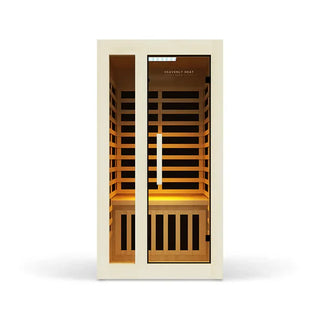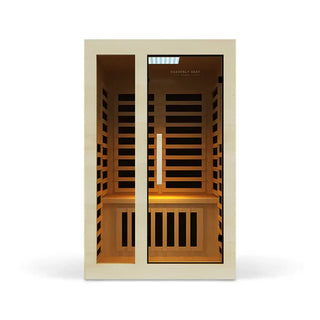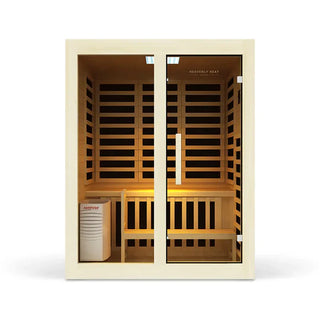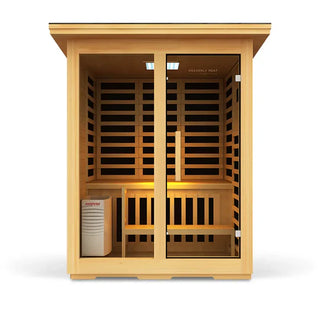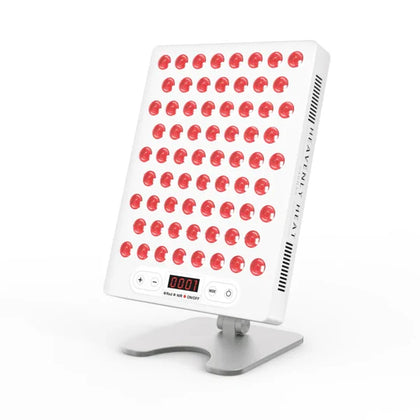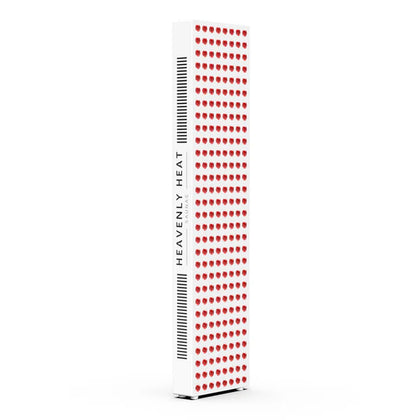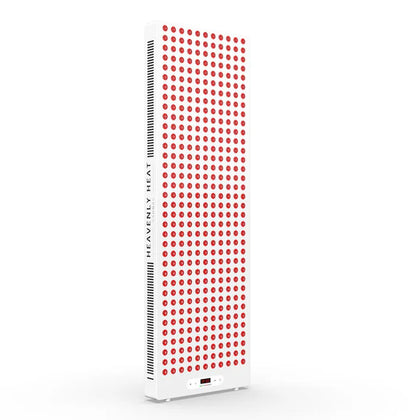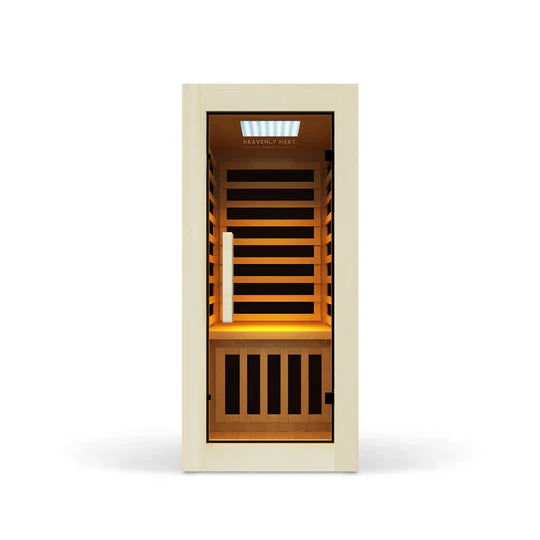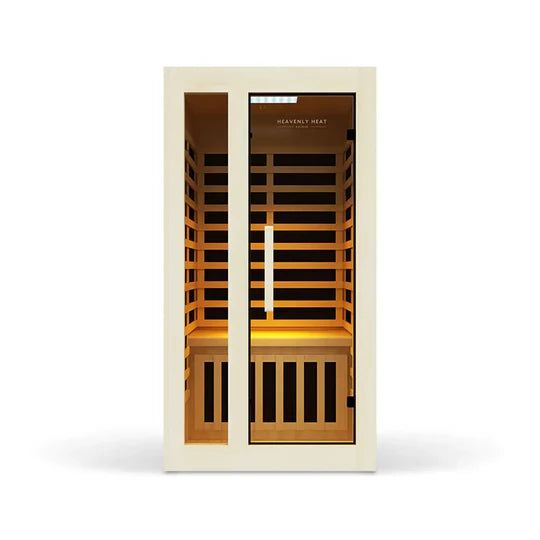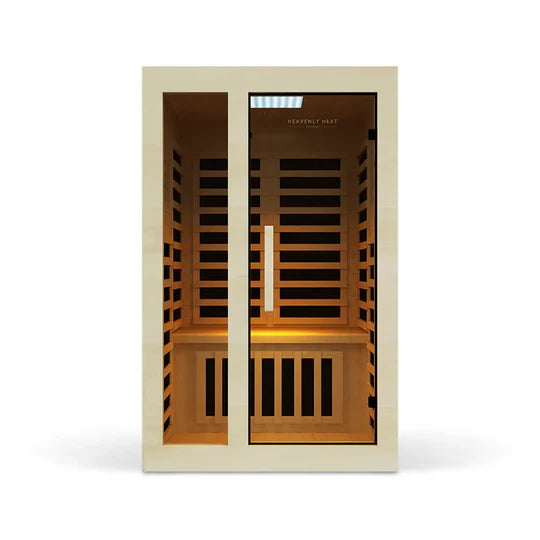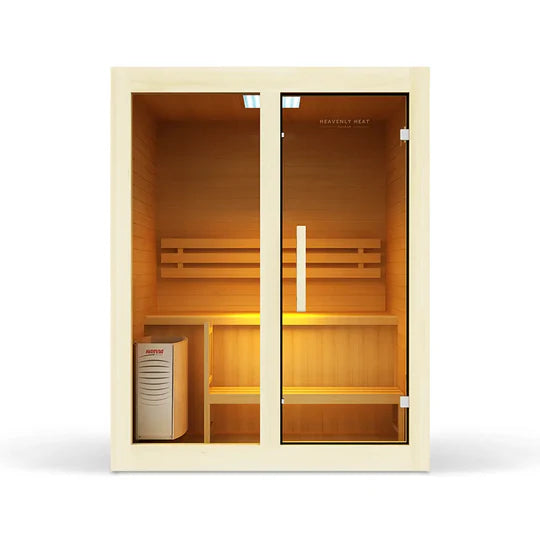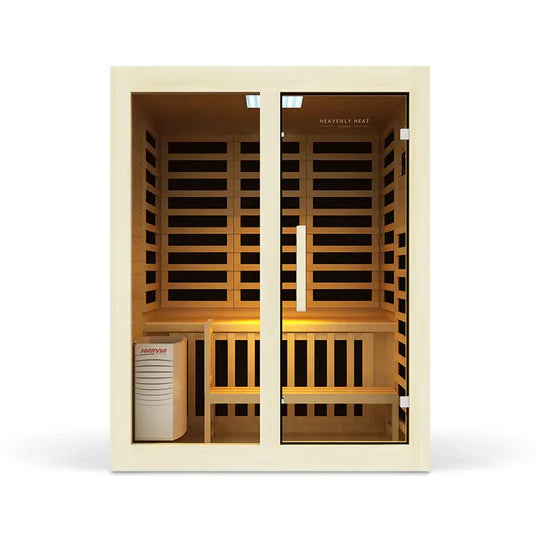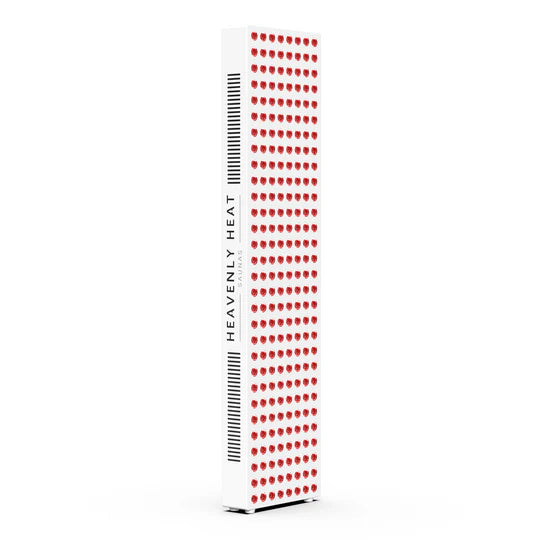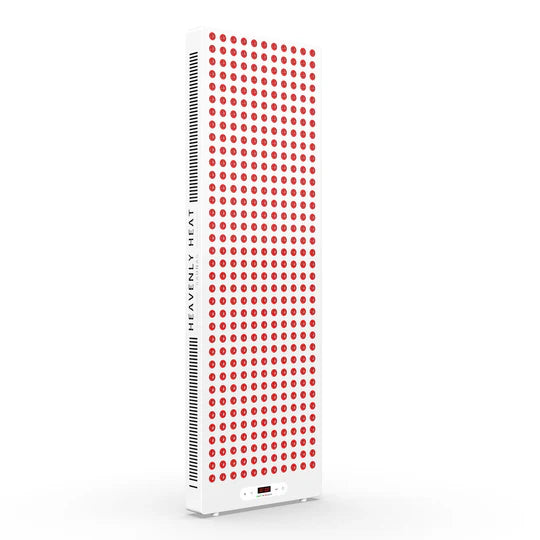Does Red Light Therapy Help Rosacea?

Struggling with rosacea can be frustrating. Persistent redness, visible veins, and painful bumps make everyday life feel like a constant battle.
Worse, flare-ups can occur unpredictably, affecting both your confidence and comfort.
But what if there’s a potential treatment that could help? In this post, we dive into how red light therapy might offer relief and transform your rosacea management.
Key Takeaways
-
Red light therapy can reduce redness and inflammation by improving blood flow and calming the skin.
-
Collagen production is boosted, helping to repair skin and minimize visible blood vessels associated with rosacea.
-
It offers a safe, non-invasive treatment option for sensitive skin without the need for harsh medications.
-
At-home devices can help manage rosacea but may take longer to show results compared to professional treatments.
-
Consistent use of red light therapy can provide long-term relief by reducing flare-ups and preventing future symptoms.

What is Rosacea?
Definition of Rosacea: Rosacea is a common skin condition that causes redness and visible blood vessels, primarily on the face. The main symptoms include persistent redness, swelling, and visible bumps, often mistaken for acne.
Common Signs and Triggers: You might notice redness on the nose, a common sign of rosacea, along with flare-ups triggered by stress, certain foods, or sun exposure.
Who Gets Rosacea?: Rosacea affects around 5% of the global population, including approximately 3.7% of adults aged 25 to 39 and 3.2% of adolescents/young adults aged 16 to 24.
What Causes the Redness?: Rosacea develops when blood vessels dilate easily, causing the skin to appear flushed.
Rosacea vs. Other Skin Conditions: While rosacea shares similarities with other conditions, like lupus or seborrheic dermatitis, it has distinct characteristics. For example, lupus often causes joint pain and a rash in other parts of the body, while seborrheic dermatitis can affect the scalp and eyebrows, with scaling that rosacea doesn’t cause.
Emotional Impact of Redness: One key feature of rosacea is facial redness, or erythema. In fact, a 2012 NRS survey found that 61% of individuals with erythematotelangiectatic rosacea reported social life inhibition, a figure that increased to 72% for those with moderate to severe redness.
Types of Rosacea
Erythematotelangiectatic (redness and visible blood vessels)
Papulopustular (bumps and pimples)
Phymatous (thickening skin)
Can Rosacea Get Worse?: Over time, it can worsen, but with early treatment, you can manage it effectively.

Quick Summary:
Rosacea is a common facial skin condition causing redness, swelling, and visible blood vessels.
Often mistaken for acne, it includes persistent redness and flare-ups from triggers like stress, sun, and certain foods.
Affects ~5% of the global population, especially adults aged 25–39 and some younger individuals.
Types include:
Erythematotelangiectatic: Redness + visible blood vessels
Papulopustular: Bumps + pimples
Phymatous: Thickened skin
Often confused with lupus or seborrheic dermatitis but has distinct signs.
Social/emotional effects are common, especially with moderate to severe redness.
Early treatment helps manage symptoms and slow progression.
Benefits of Red Light Therapy for Rosacea
Reduced Redness and Inflammation
Red light therapy has been shown to reduce redness and inflammation in rosacea patients.
By penetrating the skin, it stimulates the production of nitric oxide, which improves blood flow and helps decrease visible redness.
Many patients start noticing a reduction in redness after just 1 to 3 treatments, with continued improvement over time.
This increased circulation also calms the skin’s inflammatory response, reducing irritation and swelling.
The therapy works best with wavelengths between 600 to 650 nanometers, as these penetrate the skin more effectively.
In addition, blue light (415nm) combined with near-infrared (830nm) light has shown success in reducing redness and painful spots, especially in cases of papulopustular rosacea.
Green light (532nm) with near-infrared (830nm) helps balance oil production, which is particularly beneficial for phymatous rosacea, reducing skin thickening and improving overall texture.
For ocular rosacea, specialized LED eye treatments can also provide a targeted, anti-inflammatory solution to help soothe irritation and reduce inflammation around the eyes.
Enhanced Skin Healing and Repair
Promoting Cell Regeneration: Red light therapy speeds up the skin's healing process by encouraging the shedding of old skin cells and the growth of fresh, healthy cells.
Stimulating Collagen Production: This therapy promotes collagen production, an essential component for maintaining a strong and healthy skin barrier.
Repairing Damage from Rosacea: Red light therapy helps repair skin damaged by rosacea symptoms, including irritation and sensitivity.
Boosting Skin's Resilience: By increasing collagen levels, red light therapy strengthens the skin’s barrier, making it more resilient to flare-ups.
Improving Skin Elasticity: Enhanced collagen production improves skin elasticity, making it stronger and more resistant to future flare-ups.
Boosted Collagen Production
Collagen is vital for maintaining smooth and healthy skin, especially for those with rosacea.
Red light therapy helps stimulate collagen production by increasing blood flow and activating the body’s natural healing processes.
This boosted collagen production helps repair the skin’s surface and improve its overall appearance.
After rosacea flare-ups, the therapy can encourage collagen regeneration, which contributes to smoother, more even-toned skin.
Minimization of Visible Blood Vessels
Visible blood vessels, a common symptom of rosacea, can be minimized through red light therapy.
This treatment works by stimulating the blood vessels beneath the skin, promoting their constriction and reducing their appearance.
Most patients begin to notice improvement after a few sessions, as the red light encourages better blood flow while reducing the prominence of blood vessels.
When treating visible blood vessels, most patients see a 50% to 75% reduction after 1 to 3 treatments, according to the American Academy of Dermatology.
Treatments for visible vessels are usually spaced 3 to 4 weeks apart for optimal results.
Results from laser and light therapy for blood vessels typically last 3 to 5 years, with treated vessels not reappearing (though new ones can form).
While the results can last several years, new blood vessels may form over time, so maintenance treatments are often needed to keep the skin clear and smooth.
Safe, Non-Invasive Treatment Option
Red light therapy offers a safe, non-invasive way to treat rosacea without the need for harsh medications or surgical interventions.
The treatment works by using gentle light to stimulate healing from within the skin. It doesn’t require needles, incisions, or recovery time, making it a convenient option for those with sensitive skin.
| Symptom or Concern | Does Red Light Therapy Help? |
| Persistent redness | ✅ Yes |
| Inflammation/swelling | ✅ Yes |
| Visible blood vessels | ✅ Yes |
| Bumps and pimples | ✅ To some extent |
| Skin thickening (phymatous rosacea) | ❌ No |
| Flare-up prevention | ✅ Yes |
| Acne-like breakouts | ✅ With consistent use |
| Acne-like Sensitivity to skincare products | ✅ Helps calm irritation |

Summary:
If you’re struggling with rosacea, red light therapy can help reduce redness, heal your skin, boost collagen, and minimize visible blood vessels all without harsh treatments. It’s a safe, gentle, and effective way to support healthier, calmer skin over time.
Can Red Light Therapy Be Used on Sensitive Skin Areas?
Red light therapy is generally safe for people with sensitive skin, but it’s important to take precautions.
First, always start with shorter sessions to gauge how your skin reacts. Avoid using it on broken or inflamed skin, as it may irritate sensitive areas.
Red light therapy works by reducing redness and inflammation, which makes it a great option for people with rosacea.
It can improve flare-ups on delicate areas, such as the cheeks or nose, by calming the skin and promoting healing.
However, there are risks, especially if the intensity is too high or the treatment is too frequent. To be safe, consult a dermatologist before starting.
Quick Summary:
Safe for sensitive skin with proper precautions
Start with shorter sessions to test skin response
Avoid use on broken or inflamed skin
Helps reduce redness and inflammation (e.g., rosacea)
High intensity or frequent use may cause irritation
Always consult a dermatologist before starting
Are There Any Side Effects of Red Light Therapy for Rosacea?
Red light therapy can be a helpful treatment for rosacea, but it’s important to know that it might cause some side effects.
For some people, it can lead to irritation, especially if their skin is sensitive. The intensity of the light could even worsen rosacea symptoms or trigger flare-ups in certain cases, leading to more redness and inflammation.
It’s also possible for the skin to feel drier or even peel, which can be uncomfortable.
However, red light therapy is generally considered safe for sensitive skin types if used correctly and in moderation. Always be cautious and consult with a professional to ensure it's right for you.
Quick Summary of Possible Side Effects:
Skin irritation or sensitivity
Increased redness or inflammation
Potential flare-ups in some cases
Dryness or peeling
Generally safe if used properly and moderately
Alternative Options of Red Light Therapy for Rosacea
Topical Treatments
-
Topical treatments are typically the first line of defense for managing rosacea.
-
Creams and gels like metronidazole, azelaic acid, and ivermectin help reduce inflammation and redness.
-
These treatments calm irritated skin and prevent flare-ups.
-
Incorporating red light therapy into your skincare routine can enhance the effectiveness of topical treatments.
-
Red light therapy reduces inflammation, making it a complementary approach to topical treatments.
- Long-term skin health can be supported by combining red light therapy with other treatments.
Pulsed Light Therapy
Pulsed light therapy is a popular option for treating rosacea. Unlike traditional red light therapy, pulsed light uses intense bursts of light to target blood vessels under the skin.
This treatment works by breaking down excess blood vessels that cause redness and flushing.
Laser Treatments
Types of Lasers Used for Rosacea Laser treatments for rosacea include various types of lasers such as pulsed dye lasers (PDL) and intense pulsed light (IPL), which specifically target blood vessels under the skin.
Fractional Lasers: Reduced Downtime and Discomfort Fractional lasers deliver energy in smaller segments, leading to less downtime and reduced discomfort for patients.
Temporary Side Effects While laser treatments are generally safe, you may experience temporary side effects like redness, purple spots, or skin irritation, which usually fade within a couple of weeks.
Risk of Scarring With proper care from a skilled dermatologist, scarring remains rare after laser treatments, making it a highly effective option for many patients.
Cost Comparison: Laser vs. Red Light Therapy Laser treatments can be costly, whereas alternatives like red light therapy offer a more affordable solution without compromising effectiveness. Medical-grade red light devices typically start under $1,000.
Oral Medications
Oral medications are sometimes prescribed when topical treatments aren’t enough.
Common options include antibiotics like doxycycline or tetracycline, which help reduce inflammation.
For some, oral medications like oral contraceptives or isotretinoin may also be recommended, depending on their rosacea type.
While these medications are effective, long-term use can cause side effects such as stomach upset, sun sensitivity, or in rare cases, liver issues and birth defects with isotretinoin, making regular monitoring by a dermatologist important for your safety and the best results.
Natural Remedies
Many individuals with rosacea turn to natural remedies to complement their treatment.
Herbal treatments like chamomile or green tea extract are believed to have anti-inflammatory properties, helping reduce redness and irritation.
Cryotherapy
Cryotherapy, or cold therapy, involves using extreme cold to treat rosacea by targeting inflamed blood vessels and reducing redness.
The cold temperature constricts blood vessels, helping to decrease swelling and inflammation.
Cryotherapy is a non-invasive treatment that cools the skin to reduce inflammation and redness.
While cryotherapy is effective in alleviating visible symptoms like redness and irritation, it doesn’t treat the underlying causes of rosacea, such as genetic factors or immune system triggers.
To effectively manage symptoms, it’s typically recommended to undergo cryotherapy 1 to 2 times a week, though the frequency can vary depending on individual needs and the severity of the condition, allowing for a more tailored treatment approach.
Lifestyle Changes
Diet Adjustments to Reduce Inflammation: Avoid spicy foods, caffeine, and alcohol to help reduce inflammation.
Identifying and Avoiding Triggers: Be mindful of common triggers like heat, sunlight, and stress that can spark flare-ups.
Stress Management for Fewer Flare-Ups: Practice mindfulness and meditation to calm the body’s response to stress, which can lower flare-up frequency.
Summary:
If red light therapy isn’t your only option, don’t worry you’ve got plenty. From topical creams to lasers, cryotherapy, and even lifestyle tweaks, you can build a personalized rosacea routine that works for you. Explore and combine what suits your skin best.
Should You Use Professional Red Light Therapy or At-Home Devices for Rosacea?
When considering red light therapy for rosacea, it's essential to know the differences between professional treatments and at-home devices.
Professional red light therapy typically offers higher intensity, which can lead to quicker, more noticeable results compared to the lower intensity of at-home devices.
In-office sessions typically cost between $25 and $300, while at-home devices range from $25 to over $7,000, depending on the device.
While at-home devices can help manage flare-ups and maintain improvement, they may not provide the same dramatic reduction in redness as a professional session.
At-home devices are convenient, offering flexibility in use, but they might take longer to show results.
Quick Summary:
Professional Therapy: Higher intensity, faster results, costs $25–$300 per session.
At-Home Devices: Lower intensity, more gradual results, prices range from $25–$7,000+.
Best For:
Professionals: Quick, dramatic results.
At-home: Convenience and ongoing maintenance.
Can At-Home Red Light Therapy Devices Help with Rosacea?
At-home red light therapy can be highly effective for managing rosacea, especially when used consistently.
These devices help reduce redness and inflammation, promoting healing by stimulating collagen production.
When it comes to safety, at-home red light therapy devices are generally safe for rosacea, as long as you follow the manufacturer's instructions.
The best wavelength for treating rosacea is typically around 630-650nm, as it penetrates the skin effectively.
For optimal results, using your device 3-4 times a week is ideal. To ensure safety and avoid skin irritation or blistering, it’s important not to overuse the device and to stick to the recommended treatment schedule.
While at-home devices may not replace professional treatments entirely, they can complement them for long-term management.
Quick Summary:
Effective for rosacea when used consistently
Reduces redness & inflammation by boosting collagen
Ideal wavelength: 630–650nm
Use 3–4 times a week for best results
Follow usage instructions to avoid irritation
Works best as a supplement to professional care
Does Red Light Therapy Offer Long-Term Benefits for Rosacea?
Red light therapy has shown promising long-term benefits for people with rosacea. It can significantly reduce redness and inflammation, providing lasting relief.
With consistent use, it helps calm the skin, making it a viable long-term treatment option.
Over time, red light therapy may help prevent rosacea flare-ups, keeping the condition in check and reducing the need for other treatments.
Summary
Reduces redness and inflammation
Provides lasting relief with consistent use
Helps prevent future flare-ups
May reduce dependency on other treatments
FAQs
What Wavelengths of Light are Effective for Rosacea?
"Red light therapy, with wavelengths around 630-650 nm, helps reduce inflammation in rosacea. Wavelengths around 630-650 nm, such as 660 nm, effectively penetrate the skin, promoting circulation and reducing inflammation. Pulsed dye lasers, using wavelengths between 585-595 nm, target the vascular aspect of the condition."
How Often Should You Use Red Light Therapy for Rosacea?
For red light therapy for rosacea, aim for 3-4 sessions per week. Daily use can be effective but may irritate the skin if overdone. Expect noticeable improvements in 6-8 weeks, depending on the severity.
Can Red Light Therapy Be Used Alongside Other Treatments for Rosacea?
Red light therapy can be safely combined with most rosacea treatments, enhancing their effectiveness in reducing redness and inflammation. It doesn't interfere with antibiotics and may support healing by reducing skin irritation.
Can Red Light Therapy Prevent Rosacea Flare-Ups?
Red light therapy can help manage rosacea by reducing inflammation, soothing the skin, and decreasing redness. It’s effective in preventing flare-ups when used consistently, balancing skin reactions and making it easier to handle triggers.

